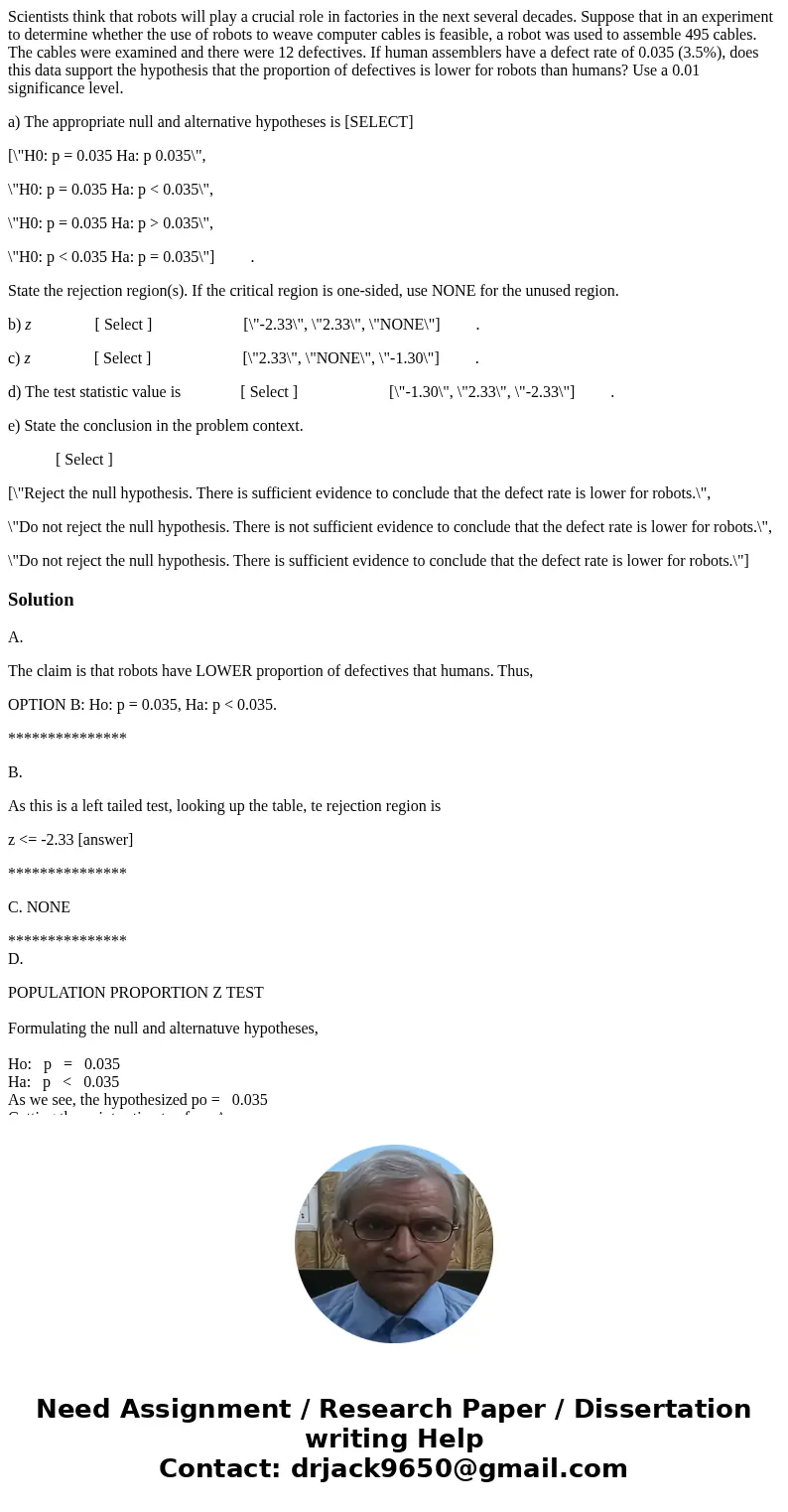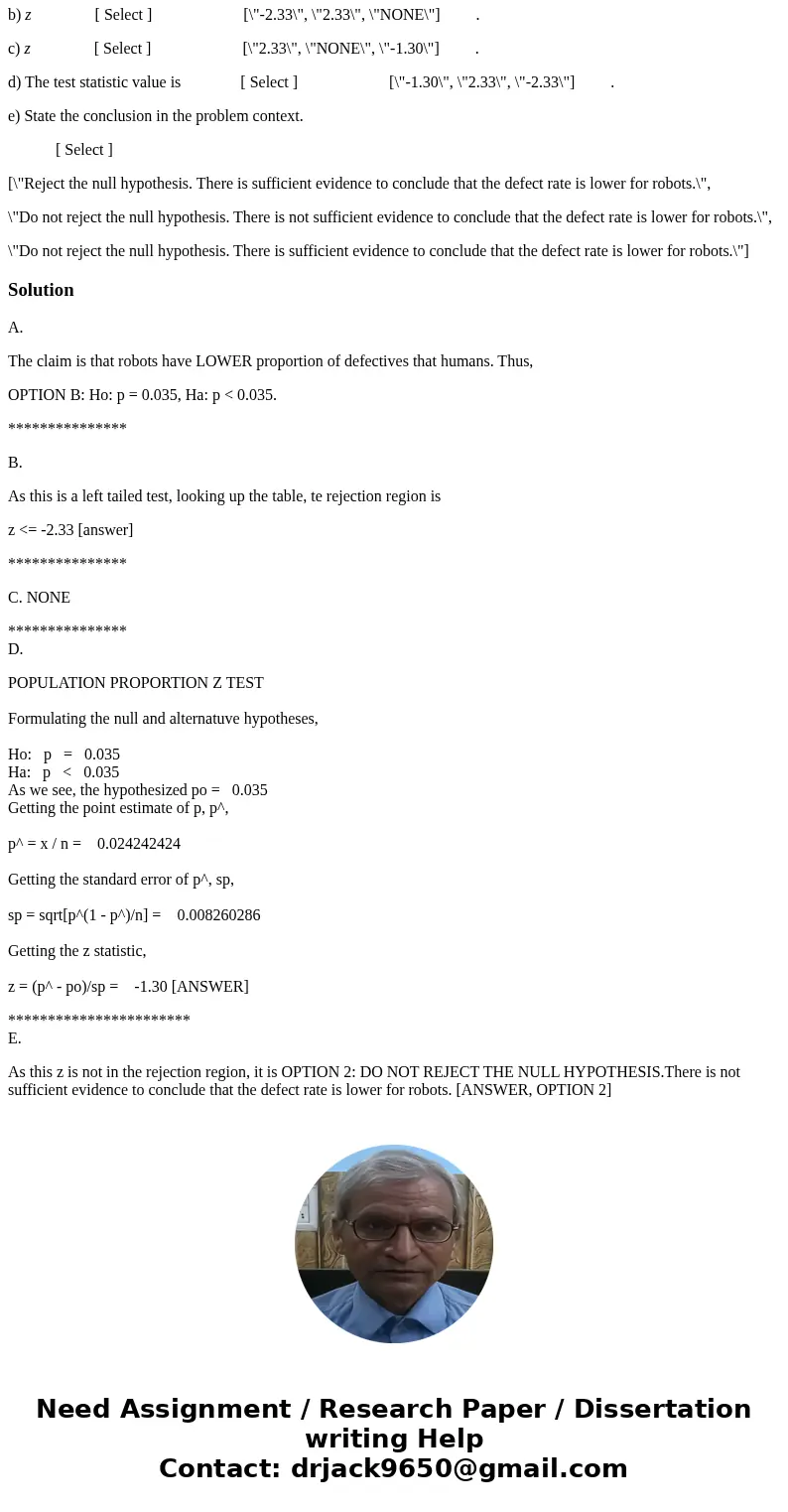Scientists think that robots will play a crucial role in fac
Scientists think that robots will play a crucial role in factories in the next several decades. Suppose that in an experiment to determine whether the use of robots to weave computer cables is feasible, a robot was used to assemble 495 cables. The cables were examined and there were 12 defectives. If human assemblers have a defect rate of 0.035 (3.5%), does this data support the hypothesis that the proportion of defectives is lower for robots than humans? Use a 0.01 significance level.
a) The appropriate null and alternative hypotheses is [SELECT]
[\"H0: p = 0.035 Ha: p 0.035\",
\"H0: p = 0.035 Ha: p < 0.035\",
\"H0: p = 0.035 Ha: p > 0.035\",
\"H0: p < 0.035 Ha: p = 0.035\"] .
State the rejection region(s). If the critical region is one-sided, use NONE for the unused region.
b) z [ Select ] [\"-2.33\", \"2.33\", \"NONE\"] .
c) z [ Select ] [\"2.33\", \"NONE\", \"-1.30\"] .
d) The test statistic value is [ Select ] [\"-1.30\", \"2.33\", \"-2.33\"] .
e) State the conclusion in the problem context.
[ Select ]
[\"Reject the null hypothesis. There is sufficient evidence to conclude that the defect rate is lower for robots.\",
\"Do not reject the null hypothesis. There is not sufficient evidence to conclude that the defect rate is lower for robots.\",
\"Do not reject the null hypothesis. There is sufficient evidence to conclude that the defect rate is lower for robots.\"]
Solution
A.
The claim is that robots have LOWER proportion of defectives that humans. Thus,
OPTION B: Ho: p = 0.035, Ha: p < 0.035.
***************
B.
As this is a left tailed test, looking up the table, te rejection region is
z <= -2.33 [answer]
***************
C. NONE
***************
D.
POPULATION PROPORTION Z TEST
Formulating the null and alternatuve hypotheses,
Ho: p = 0.035
Ha: p < 0.035
As we see, the hypothesized po = 0.035
Getting the point estimate of p, p^,
p^ = x / n = 0.024242424
Getting the standard error of p^, sp,
sp = sqrt[p^(1 - p^)/n] = 0.008260286
Getting the z statistic,
z = (p^ - po)/sp = -1.30 [ANSWER]
***********************
E.
As this z is not in the rejection region, it is OPTION 2: DO NOT REJECT THE NULL HYPOTHESIS.There is not sufficient evidence to conclude that the defect rate is lower for robots. [ANSWER, OPTION 2]


 Homework Sourse
Homework Sourse